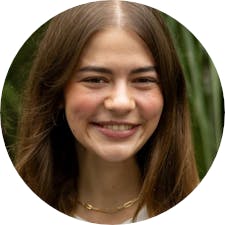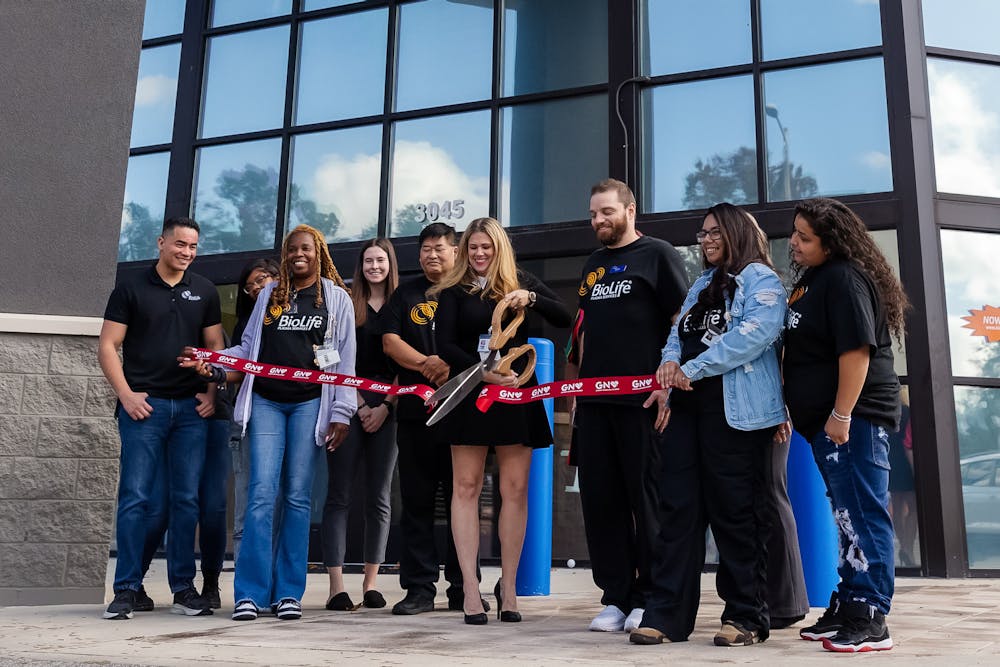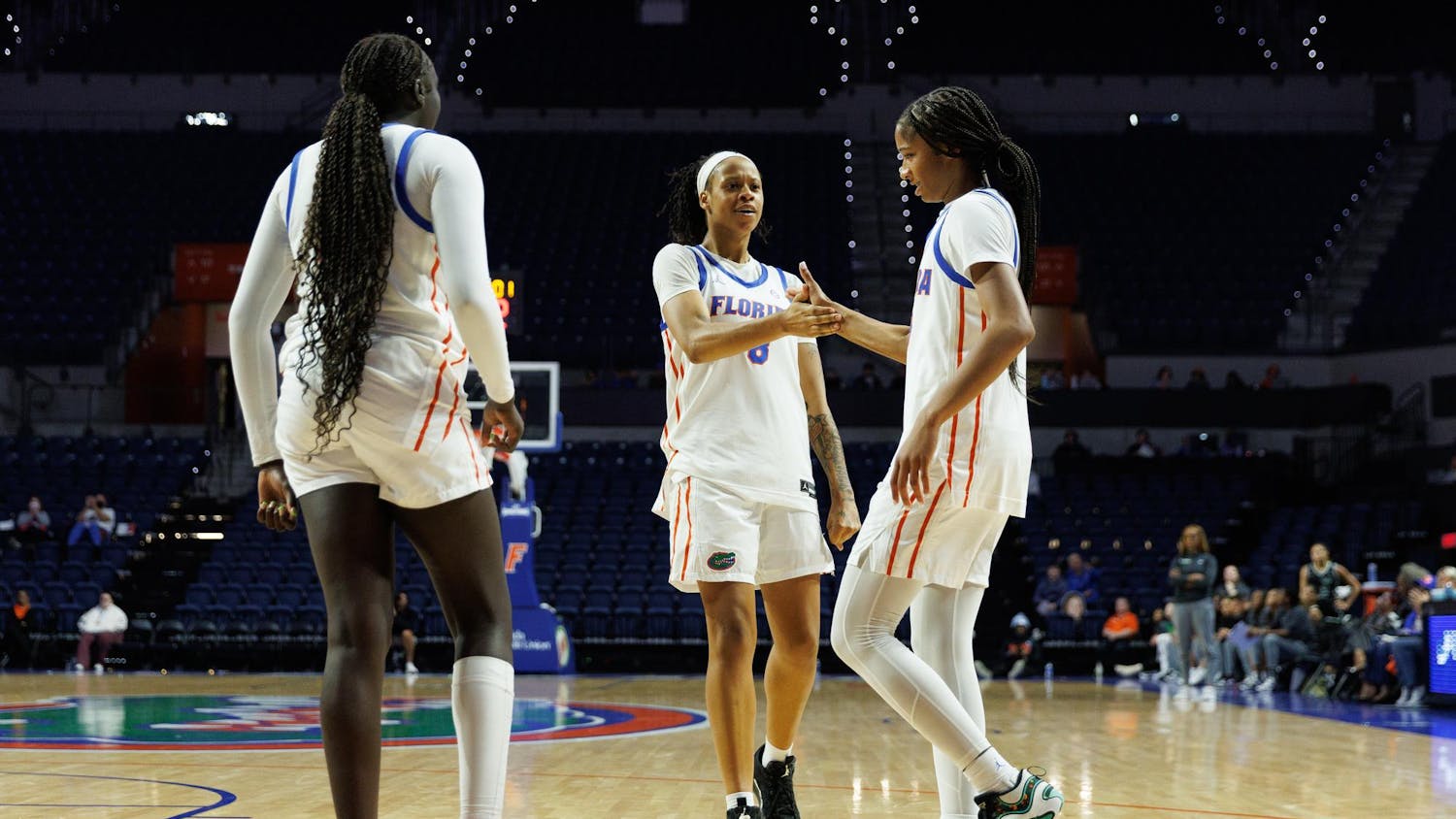The business of collecting blood for money is growing nationwide, and Gainesville is no exception.
The city is already home to for-profit plasma collection centers KEDPLASMA Gainesville and Grifols BioMat USA. Now, the new BioLife Plasma Services is bringing in donors and re-igniting ethical questions.
These companies pay for plasma, the yellowish liquid that makes up a little over half a person’s blood. At the centers, medical staff draw blood from a donor’s arm. A machine then isolates the plasma and returns the remaining parts of the blood — red and white blood cells and platelets — into the donor.
Blood donation vs plasma donation: what’s the difference?
Unlike whole blood donations, which can only be given every 56 days, people can donate plasma every two days, up to twice per week, in the U.S.
Whole blood donation is also unpaid and voluntary, given at nonprofits like LifeSouth or OneBlood, rather than for-profit companies.
Marc Zumberg, chair of the transfusion committee at UF Health Shands Hospital, said people may get paid for plasma but not blood due to marketability.
“Red blood cells, platelets, are infinitely important to patients — plasma is not more important,” Zumberg said. “I just think it's used for more commercial products. So there's a greater need.”
Paid plasma from for-profit centers cannot be used in hospitals for direct transfusion due to U.S. Food and Drug Association Guidelines. Instead, centers sell the product to pharmaceutical companies who use it to make plasma therapies. These medicines can be used to treat patients with conditions like immune deficiencies.
Ethical standards
Centers expect people desperate for money will be the ones selling plasma, said Bill Allen, a member of the UF Health Shands Hospital Ethics Consult Service. In the U.S., a typical plasma collection can range from about $30 to $70.
Among BioLife’s 14 Florida locations, all but two are located in areas with household median incomes below the state average. Nationwide, over half of the 225 BioLife centers are located in areas with median household incomes at least $5,000 lower than their state’s average.
“You don’t see many people who are well-off, or who can pay their bills and pay the rent and buy groceries and so forth, giving plasma,” Allen said.
Some argue targeting low-income donors violates two medical ethics principles: autonomy and justice, Allen said. A person forced to sell plasma due to their economic situation isn’t fully making a free choice, and they receive all the burdens and none of the benefits of the process, he said.
Those burdens include under-researched long-term health effects and unregulated financial compensation, he said. There is no minimum federal guideline for plasma payments.
Kristine Brown, a Gainesville resident since 2014, gave plasma at the Biomat center for about five years. The 43-year-old credit manager stopped donating recently due to poor compensation and staff-to-donor communication, she said.
Brown received $100 per visit initially, but the figure soon decreased to between $65 and $75. By the time she stopped four months ago, she was receiving $40 to $50 per visit. It wasn’t enough to justify the two to six hours she often spent in the waiting room, she said.
“You’re put in there like cattle — they get you in, they get you out,” she said. “Prying on people who need money the most. If you give a little bit more incentive, then people feel that they’re not being used.”
Medical staff once accidentally blew out Brown’s vein with the needle, after which she couldn’t use her arm for a while, she said. She also once saw an employee not changing their gloves.
Brown said she saw mostly Gainesville residents that “don’t have a bunch of money” and are not going to college, rather than UF students, in the center. She didn’t see Biomat as a “college student kind of place,” she said.
Tom Srodek, a 46-year-old Gainesville resident, had better feedback for Biomat. He began donating plasma there two months ago and has had good experiences, he said.
Srodek, currently unemployed, only donates plasma when he’s “broke,” he said. But he doesn’t feel the center takes advantage of him.
“I’m sure they make a lot more money off the plasma they collect from people,” he said. “But it’s my decision.”
New BioLife Center
At the new BioLife center, donors get $90 to $100 per session, which last about an hour each. The offer is part of the center’s opening celebrations. Its website does not specify rates after the opening period, which ended Nov. 10.
To receive the offer, donors must complete eight donations in 30 days, or about two donations per week.
The new building occupies the spot of a former gym in the University Town Center plaza off Archer Road containing the Enson Market Asian grocery store.
Michael Rowcotsky, a BioLife employee who physically examines visitors to ensure they’re fit to give plasma, said the center has been seeing a little over 100 donors per day since opening.
Medical staff can be hard to retain, but the Gainesville center has been able to keep five on hand, which is enough to keep business running smoothly, he said.
Rowcotsky doesn’t like having to upset people by turning them away for reasons like having bruises on their arms or having a tattoo in the last four months, he said. But Rowcotsky loves every other part of his job, he said, especially knowing the plasma will go toward life-saving medicine.
“You’re not just here to sell your body,” he said.
Adriana Abaunza, a 21-year-old UF wildlife ecology senior, started donating after seeing an Instagram advertisement. The center promoted its opening across the city, including online and on a large banner in the Oaks Mall food court.
Abaunza already holds a part-time job at clothing store Anthropologie but began donating plasma for extra money to help pay for her upcoming study abroad trip to Portugal, she said.
During her three visits, Abaunza’s been pleased with the center’s cleanliness, and the staff’s attitude, she said — so much that she’s recommended the experience to others.
“I’ve talked to my friends, and they’re like, ‘Maybe I should do that,’” she said.
Profits and morals
Gainesville is the birthplace of LifeSouth, a community blood center nonprofit that often wheels buses through the UF campus to collect donations in exchange for T-shirts or tumbler cups.
Although best known for whole blood collection, LifeSouth also takes plasma donations — although plasma donors do not get paid as they would at Biomat or BioLife.
Unlike plasma from paid centers, the materials collected at LifeSouth can be used for direct hospital transfusions, said LifeSouth spokesperson Brite Whitaker. The organization supplies plasma to local hospitals, where it can be given to patients with burn or trauma injuries, Whitaker said.
Only plasma deemed unfit for transfusions is manufactured to be used for pharmaceuticals and medicines, she said.
“That's the importance of community blood centers and nonprofit blood centers like LifeSouth,” she said. “That's the service that we provide is those blood donations to hospitals to help directly treat patients.”
The profit versus nonprofit model for plasma collection further complicates the ethics of the topic, said Joseph Thornton, a UF psychiatry associate professor who teaches classes in bioethics.
LifeSouth spent about 1% of its annual revenue, or about $1.5 million, on executive compensation last year, including salaries for the president, vice president and chief operating and financial officers.
It receives most of its revenue, over 95%, from processing fees charged to hospitals for blood.
A nonprofit like LifeSouth — or OneBlood or Red Cross, which also have blood donation centers in Gainesville — uses extra funds to expand company reach. But a for-profit agency acts on its responsibility to shareholders to sell the product for as much as it can, Thornton said.
“Large sums of money offer large sums of temptation,” he said. “And the more money involved, the more temptation there is to cut corners.”
Many countries, including Australia, the United Kingdom and France, don’t allow paid plasma donations at all, according to a Canadian Agency for Drugs and Technologies in Health report published in 2021.
The U.S. collected more plasma than any other country in 2021. It also had the most lax regulations, allowing a person to donate plasma more than 100 times per year — double the rate of Austria and four times as much as the Czech Republic, which were the second- and third-highest global producers.
The U.S. contributes about 70% of the global plasma supply, and the medicines produced from that supply saves lives on a mass scale. But Thornton said their effects on the donor are under-researched on a long-term basis.
“Your body can replace the fluids that quickly, but you’re replacing all the immunoglobulins, all the immunity protection,” he said. “There should be some type of system to monitor for any untoward effects as they continue the donations.”
Contact Zoey Thomas at zthomas@alligator.org. Follow her on X @zoeythomas39

Zoey is the Fall 2025 engagement managing editor of The Alligator. She has previously served as data editor and reported on the university, metro and enterprise desks. Over the summer, she interned for the Orlando Sentinel. Zoey inherited her mom's love of strong coffee and her dad's love of "Buffy the Vampire Slayer."






